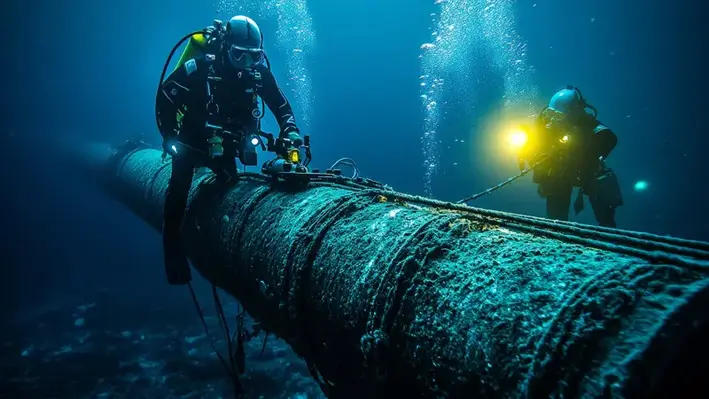
 Ultra-deepwater applications require high performance, modular well stimulation services.
Ultra-deepwater applications require high performance, modular well stimulation services.
The digital control system in Caltex’s Rigless Stimulation Tool (RST) helps in minimising flow path restrictions as its fast response time and seamless integration into a Multi-Purpose Service Vessel (MPSV) with multiple command stations ensure prompt addressal.
The tool can withstand any chemicals used in stimulations and scale treatments, ranging from acids, solvents, paraffin treatments, fines, and asphaltene deposits in production tubing, completions, and reservoirs. Operators can deploy RST to access candidate wells, particularly the ones with limited direct vertical access (DVA) under production facilities, to safely operate interventions as well as other activities.
Caltex’s RST is rated for sub-ambient pressure operations where the well mudline pressure is lower than hydrostatic conditions. The company's instrumentation and conduits are suitable from near 0 PSIA to 15,000 PSIA at 10,000 feet subsea.
Learn more about Offshore Network's well intervention conferences here.
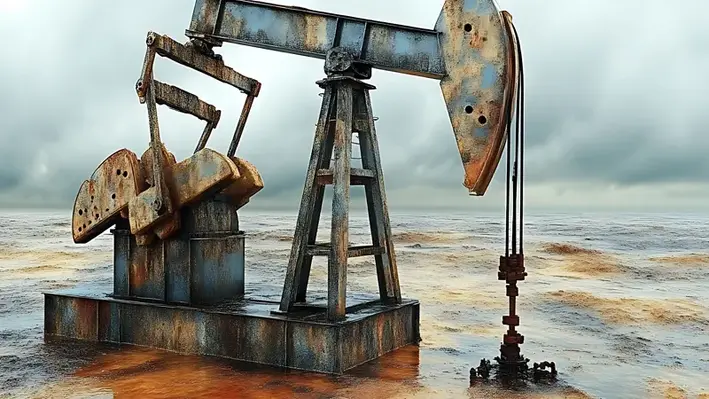
 Fishing forms an integral part of even the plugging and abandoning process, besides its significance in drilling, completing or recompleting.
Fishing forms an integral part of even the plugging and abandoning process, besides its significance in drilling, completing or recompleting.
A North American company called Wellbore Fishing & Rental Tools LLC provides operators with these services, with a special emphasis on risks, costs and downtime reduction.
With strategically located yards in Port Fourchon and Texas City, the company's position near the loading docks serve as holding locations for fishing tools, eliminating shipping time, thus in turn, working wonders in bringing down NPT.
Comprising of a workforce with decades-long experience in the industry, the company personnel works on the basis of continued research and development to meet the demands and challenges of an ever-evolving industry. Personnel training in the company is usually driven by exposure to new equipment and process solution. Currently, the team is focusing on adapting real time technology to monitor tool performance parameters and high performance tool properties for extreme deep-water service applications.
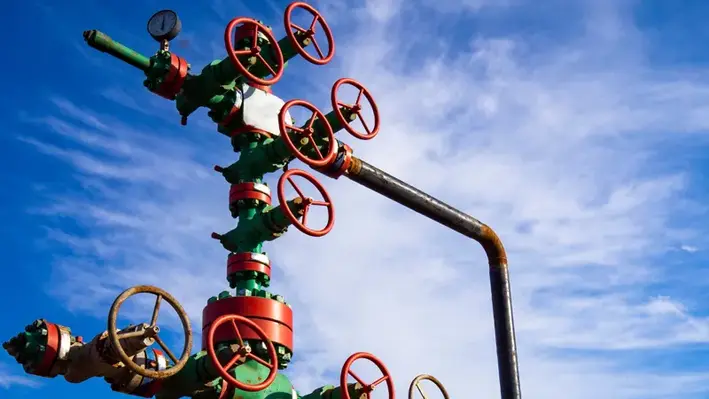
 To resolve methane emissions challenges during a decommissioning programme, Interwell P&A's RockSolid turns out to be an ideal solution
To resolve methane emissions challenges during a decommissioning programme, Interwell P&A's RockSolid turns out to be an ideal solution
The company had addressed such an issue during a Canada operation, when it was able to shut in a shallow methane gas source ejecting around 0.55 cu/m per day by installing a gas-tight barrier at 773mKB inside a competent caprock.
The emission was initially isolated and later stopped, enabling a smooth delivery of the decommissioning programme. It was a result of a surface casing vent flow (SCVF) issue in a well, where two different gas sources were identfied following pre-intervention logging. The installation of the RockSolid barrier ensured that it was effectively sealed from the roots, allowing ongoing research to address the shallow source. This was shut off by the installed RockSolid that replaced the casing and cement, obstructing any hydrocarbon flow inside the borehole. As gas pockets above the barrier had bled off, the well decommissioning programme was carried out unhindered.
The RockSolid remains a sustainable plugging alternative.
Click here to register for Offshore Network's Gulf of Mexico Decommissioning and Abandonment conference.
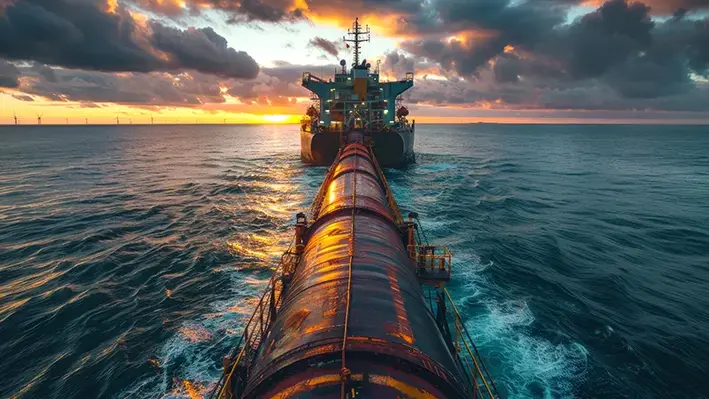
 One of the latest industry innovations in the subsea well intervention market is Unity's Subsea Compact Shear-Seal Blowout Preventer.
One of the latest industry innovations in the subsea well intervention market is Unity's Subsea Compact Shear-Seal Blowout Preventer.
As a BOP safety head, the CSS can provide critical safety barrier above the subsea tree as part of the landing string.
A result of Unity’s original, field-proven, compact and lightweight surface design, the Subsea CSS comes with a friendly modular interface, ideal for any mode of deployment, be it rig-based, in-riser intervention, or light well intervention open water riser and riserless as well.
Redefining strength and durability in the subsea environment, the Subsea CSS can be classified as a high performing safety barrier which takes less than 10 seconds of closing time. It is 50% lighter than conventional designs, and measures 33.5″ at its widest point, requiring less deck space. Targeted at the shallow water market for standard pressure abandonment and intervention applications, the model requires on additional personnel for operation. It boasts of an universal shear and seal capability, applicable to rods, coiled tubing, wireline, slickline and e-line.
Easily adaptable to dual ram configuration, it is designed for easy access to rams and seals for redress and to replace rams for varying applications.
Check out Offshore Network's upcoming well intervention conferences here.
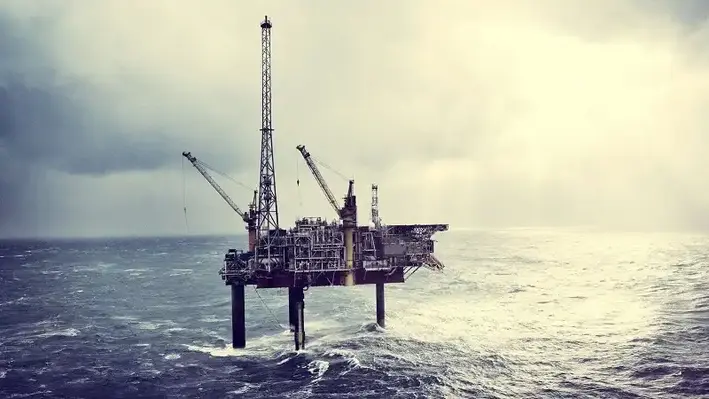
 In December 2024, INEOS Energy acquisitioned the Gulf of Mexico deepwater assets of CNOOC Energy Holidays USA Inc., a subsidiary of CNOOC International Ltd, marking the third major investment for INEOS within the US in the last three years.
In December 2024, INEOS Energy acquisitioned the Gulf of Mexico deepwater assets of CNOOC Energy Holidays USA Inc., a subsidiary of CNOOC International Ltd, marking the third major investment for INEOS within the US in the last three years.
The deal includes the acquisition of non-operated assets built around two deepwater early production assets within the Gulf (Appomattox and Stampeded fields), as well as several mature assets and supporting businesses. The additional asset increase INEOS global production rate to more than 90,000 barrels of oil equivalent per day.
Brian Gilvary, Chairman of INEOS Energy, said, “This is a major step for us into the deepwater Gulf of Mexico, which builds on our growing energy business. INEOS Energy is all about competing in the energy transition to provide reliable, affordable energy to meet world demands as the population continues to grow.”
INEOS Energy’s CEO, David Bucknall, added, “The USA is a very attractive place for INEOS Energy to invest. This is our third deal in three years following the 1.4 mtpa LNG deal with Sempra and the acquisition of Chesapeake Energy’s oil and gas assets in South Texas. Total capital spend on energy assets in the USA now exceeds US$3bn, providing a strong platform for future growth.”
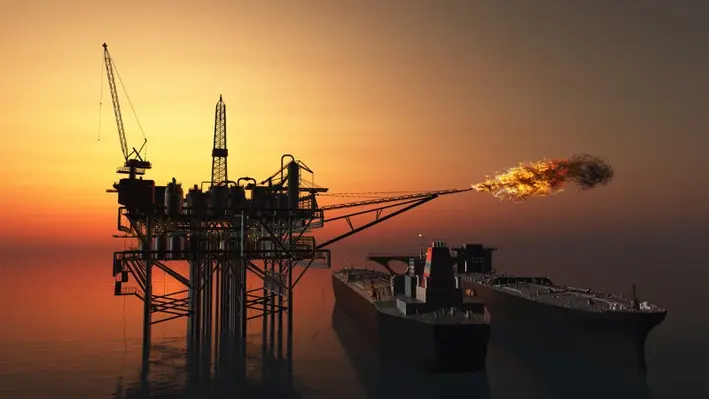

The Gulf of Mexico (GOM) is a critical region for offshore oil and gas production, with operators increasingly focusing on mature fields to meet energy demands sustainably.
As new field discoveries slow, industry leaders are directing resources towards maximising the efficiency and recovery of existing assets.
According to industry insights, the GOM accounts for a significant portion of global oil production from mature fields, where advanced well intervention techniques are proving instrumental in maintaining output.
With many platforms and wells in the region reaching the latter stages of their operational lives, optimising recovery has become a cost-effective and environmentally sound approach.
Unlike new developments, interventions on mature fields leverage existing infrastructure, minimising both capital expenditure and environmental footprint.
Technological advancements are at the heart of this strategy. Companies like Baker Hughes are introducing tailored solutions such as their Mature Assets Solutions programme, designed to enhance production efficiency while addressing sustainability concerns. Light well intervention technologies are also increasingly deployed in the region, enabling cost-effective maintenance and recovery improvements.
The well intervention market in the Gulf of Mexico is projected to grow steadily as operators shift their focus from exploration to maximising output from existing fields. Industry reports indicate increased spending on well interventions, with the region becoming a hub for innovation in this domain.
Challenges remain, including ageing infrastructure and tightening regulations. However, these also present opportunities for service providers and technology innovators. By addressing these issues proactively, operators in the GOM are positioning the region as a leader in sustainable offshore production.
The focus on mature fields in the GOM reflects a broader trend in the energy sector: achieving a balance between meeting current energy needs and progressing towards a more sustainable future. This approach ensures the Gulf remains a cornerstone of global offshore production while contributing to environmental and economic goals.
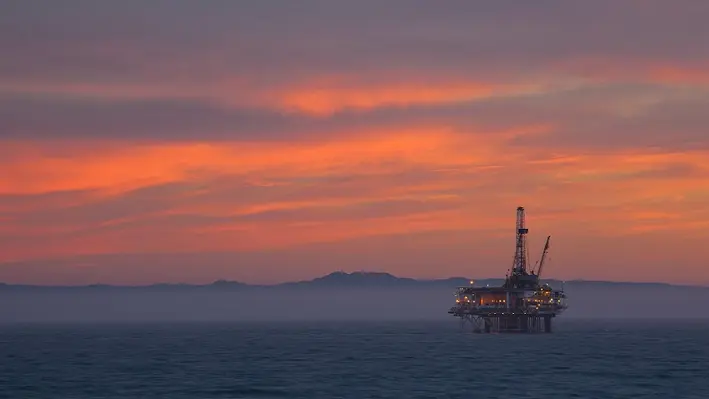
 Blake Habbit has been promoted to Danos’ new Operations Manager to lead the growth and development of the company’s decommissioning services within the Gulf of Mexico.
Blake Habbit has been promoted to Danos’ new Operations Manager to lead the growth and development of the company’s decommissioning services within the Gulf of Mexico.
In his role, Habbit will oversee the business operations and customer support throughout the decommissioning phase while coordinating across Danos’ diverse entity portfolio to ensure safe, seamless and efficient management of client’s end-of-life projects.
CEO Paul Danos said, “Blake’s extensive industry knowledge and proven track record of managing customer accounts make him the perfect fit for this role. We are confident that under his leadership, our decommissioning services will expand, and we will be able to support the changing needs of our customers as they transition to end-of-life.”
Habbit has 25 years of experience within the industry covering offshore production operations, drilling and safety. He joined Danos as a Production Services Account Manager in 2029 and was named Senior Account Manager in 2023.
Danos has previously aided in a series of decommissioning projects within the Gulf of Mexico, including two P&A campaigns for major operators in 2012 and 2017, details of which can be found on its website.
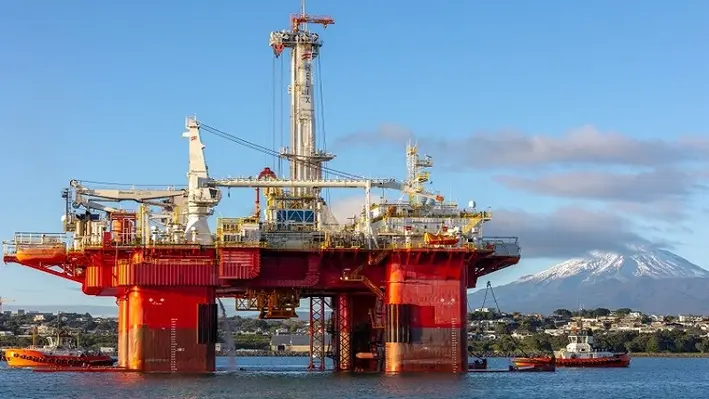
 Helix Energy Solutions Group will continue its work in the Gulf of Mexico this year where it will carry out well intervention services as part of a multi-year contract with Shell Offshore Inc., signed in Q3 2024.
Helix Energy Solutions Group will continue its work in the Gulf of Mexico this year where it will carry out well intervention services as part of a multi-year contract with Shell Offshore Inc., signed in Q3 2024.
In the coming months, and as outlined by the contract, Helix will provide an increased minimum number of days annually with the Q5000 riser-based well intervention vessel, Intervention Riser Systems (IRSs), remotely operated vehicles (ROVs), and project management and engineering services which will cover fully-integrated operations from production enhancement to P&A.
Scotty Sparks, Helix’s Executive Vice President and Chief Operating Officer, said, “We are pleased to announce that Helix has successfully executed a long-term contract with Shell, a valued customer we have safely worked with on numerous projects around the world and with whom we look forward to continuing our excellent relationship. The contract is reflective of improving market conditions and increased demand for Helix’s assets and services, as we continue executing on our strategy by providing best-in-class and global leading well intervention services.”
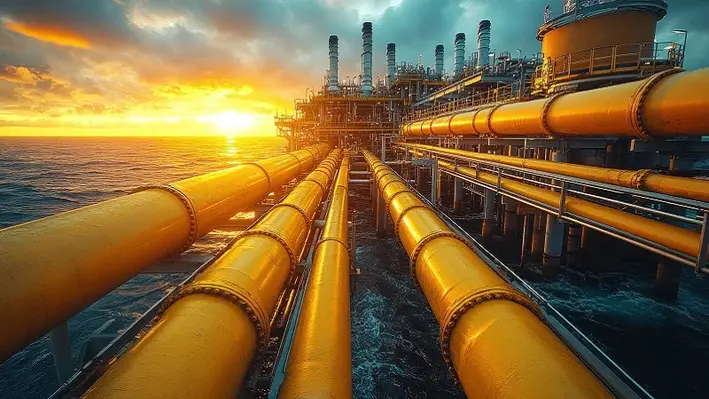

Proposed legislation would direct the US Department of the Interior to submit an annual public report to congress on the status of decommissioning offshore oil and gas wells, platforms and pipelines.
The Plug Offshore Wells Act was introduced by Oregon Senators Ron Wyden and Jeff Markley before the end of 2024 and seeks to address the growing threat of abandoned offshore oil and gas infrastructure to marine ecosystems and the environment.
“Neglected oil wells off our coasts are a ticking time bomb that threaten our coastal communities and environment in Oregon and nationwide,” Wyden explained. “It’s unacceptable that Big Oil has dodged responsibility to clean up drilling sites and pollution. This legislation will provide the data needed to hold Big Oil accountable and protect the public as well as our waterways and marine life."
“Orphaned wells are an environmental catastrophe waiting to explode," Wyden added. "They pose the possibility of massive damage to the ocean by leaking oil and gas and must be addressed quickly.”
In submitting the new legislation (which was co-sponsored by Senators Peter Welch and Ed Markey), the office of Wyden quoted a recent study by the US Government Accountability Office (US GAO) which expressed that more than 2,700 wells and 500 platforms in the Gulf of Mexico are overdue for decommissioning. The study also found that the Bureau of Safety and Environmental Enforcement and the Bureau of Ocean and Energy Management are unable to effectively enforce decommissioning deadlines and financial assurance requirements.
The study by US GAO recommended steps congress could take to address the current backlog of overdue decommissioning requirements, including the instituting of new reporting requirements from the Interior Department to Congress on the status of decommissioning.
This is what the Plug Offshore Wells Act aims to do while also reducing financial burdens on taxpayers by increasing oversight of Big Oil companies and holding them accountable for the full terms of their offshore oil leases. The proposed legislation – which is supported by numerous organisations including the Center for Biological Diversity, Earthjustice, Natural Resources Defense Council, Oceana, Ocean Conservancy, Ocean Defense Initiative, and the Surfrider Foundation – has now been officially introduced to congress and has been referred to the Committee on Energy and Natural Resources.
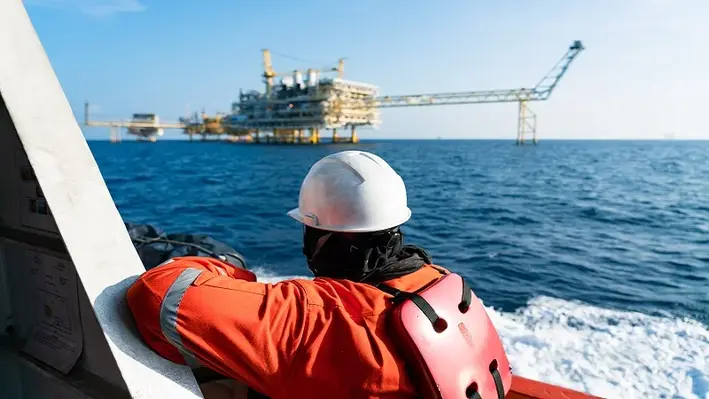

In one of his final acts before Trump returns to the White House, US President Biden has implemented a ban on new offshore oil and gas drilling across most of America’s coastline.
The decision from the ‘lame-duck’ President, was taken in light of the “environmental and economic risks and harms that would result from drilling” that “outweigh their limited fossil fuel resource potential” according to an official announcement on The White House website. As such, more than 625 million acres of the US ocean has been protected from drilling, principally the entire U.S. East coast, the eastern Gulf of Mexico, the Pacific off the coasts of Washington, Oregon, and California, and additional portions of the Northern Bering Sea in Alaska. These have been protected from future oil and natural gas leasing in a bid to safeguard coastal communities, marine ecosystems, and local economies from oil spills and other impacts of offshore drilling.
For President Trump – who has recently named a fracking executive as his Energy Secretary – it presents an immediate challenge and one that he has promised to address as soon as he comes to power. In a radio interview, the President-elect said he has the “right to unban it” and he would do so at the earliest opportunity.
However, this may not be so simple. As outlined by Reuters, the Lands Act does not grant President’s legal authority to overturn prior bans and any attempt to do so would likely require an act of Congress. Biden’s bid to protect the marine environment could, therefore, not be as futile as Trump imagines and could bring a temporary halt to his plans to unleash domestic fossil fuel production.
Fortunately, for oil and gas companies who are eager to maintain production rates but are now unable to fall back on the tried and tested method of drilling, production enhancement through well intervention can offer a timely solution. Certainly, the longer the ban on new drilling stands, the more attractive this method of sustaining rates will become, presenting a potentially lucrative market and unique opportunity for those involved in delivering well intervention services.
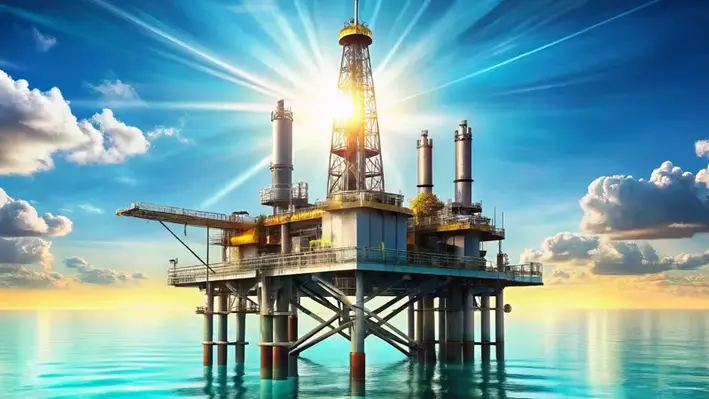
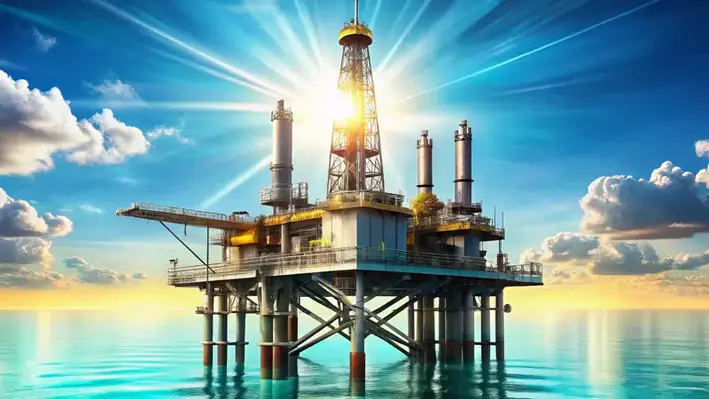
According to an analysis from Verified Market Research, the Gulf of Mexico oil and gas decommissioning market is estimated to reach a valuation of US$43.31bn in 2031
Stricter environmental restrictions have hastened decommissioning activities, with 2,300 non-producing wells scheduled for plugging and abandonment by 2025. The US Department of Interior’s annual report states that environmental compliance expenses for decommissioning grew by 35% between 2020 and 2023, reaching an average of US$2.8mn per platform.
Many Gulf of Mexico operators face enormous financial risks due to their decommissioning obligations. As infrastructure ages and becomes more difficult to destroy, the expected expenditures for decommissioning range from US$40bn to US$70bn. Furthermore, the decommissioning process has inherent environmental dangers, especially if not carried out effectively.
The deepwater segment is estimated to hold the largest market share during the forecast period, with the deepwater Gulf of Mexico showing tremendous untapped resource potential, attracting major investment and interest from operators. Technological developments have increased the efficiency and safety of deepwater operations, making it more economically viable to extract resources from deeper oceans. Subsea engineering and remote monitoring system innovations make decommissioning operations more efficient, lowering costs and timescales. These technological advancements increase the appeal of deepwater projects, resulting in more growth in this segment.
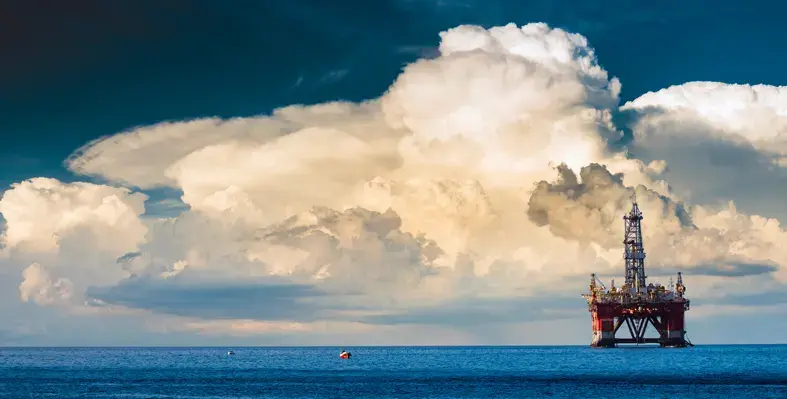
 Helix Energy Solutions Group will continue to provide well intervention services in the US Gulf of Mexico for Shell starting this year as part of a new multi-year contract.
Helix Energy Solutions Group will continue to provide well intervention services in the US Gulf of Mexico for Shell starting this year as part of a new multi-year contract.
Ranging throughout the well life cycle to plug and abandonment, the contract will cover integrated project management and engineering services including production enhancement.
The contract ensures services for an increased minimum number of days annually, including the availability of the Q5000 riser-based well intervention vessel, Intervention Riser Systems (IRSs), and remotely operated vehicles (ROVs).
Equipment from Subsea Services Alliance, a venture by SLB and Helix, will also be deployed for operations.
Scotty Sparks, Helix’s Executive Vice President and Chief Operating Officer, said, “We are pleased to announce that Helix has successfully executed a long-term contract with Shell, a valued customer we have safely worked with on numerous projects around the world and with whom we look forward to continuing our excellent relationship. The contract is reflective of improving market conditions and increased demand for Helix’s assets and services, as we continue executing on our strategy by providing best-in-class and global leading well intervention services.”
Page 9 of 22
Copyright © 2025 Offshore Network